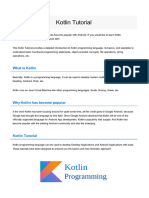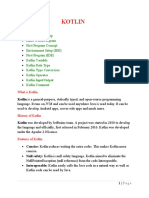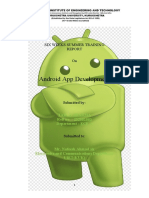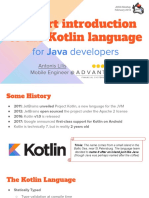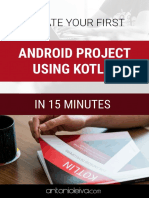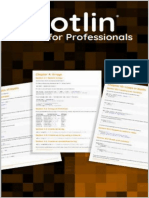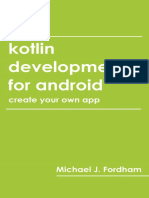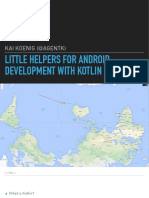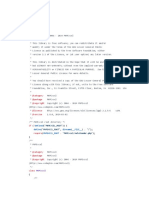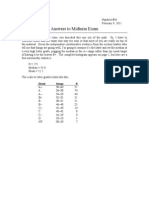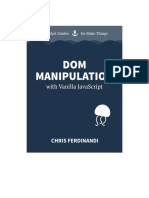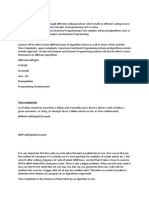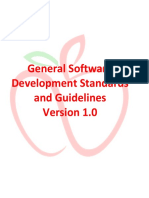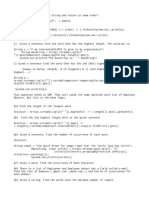0% found this document useful (0 votes)
188 views38 pagesKotlin in A Nutshell Ebook
The document provides an introduction to the Kotlin programming language. It discusses getting started with Kotlin by installing IntelliJ IDEA and creating a "Hello World" project. It then covers basic Kotlin syntax including variables, string templates, ranges, control flow structures, functions, classes, objects, interfaces, and collections. It also discusses lambda expressions, higher-order functions, and scope functions. The document serves as a tutorial to help new Kotlin programmers learn the essential elements of the language.
Uploaded by
RajCopyright
© © All Rights Reserved
We take content rights seriously. If you suspect this is your content, claim it here.
Available Formats
Download as PDF, TXT or read online on Scribd
0% found this document useful (0 votes)
188 views38 pagesKotlin in A Nutshell Ebook
The document provides an introduction to the Kotlin programming language. It discusses getting started with Kotlin by installing IntelliJ IDEA and creating a "Hello World" project. It then covers basic Kotlin syntax including variables, string templates, ranges, control flow structures, functions, classes, objects, interfaces, and collections. It also discusses lambda expressions, higher-order functions, and scope functions. The document serves as a tutorial to help new Kotlin programmers learn the essential elements of the language.
Uploaded by
RajCopyright
© © All Rights Reserved
We take content rights seriously. If you suspect this is your content, claim it here.
Available Formats
Download as PDF, TXT or read online on Scribd
/ 38











